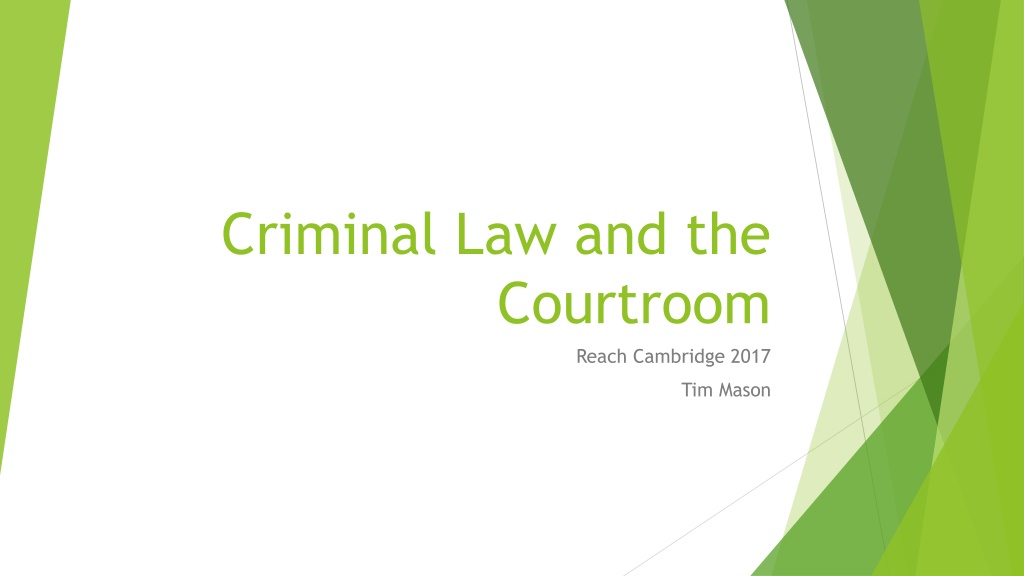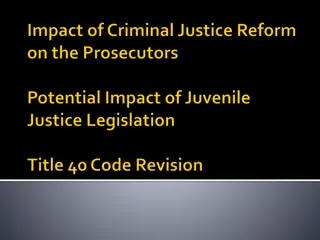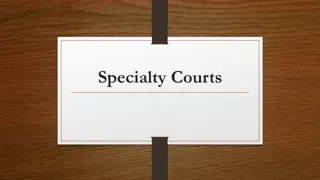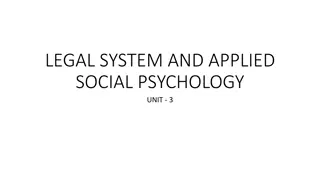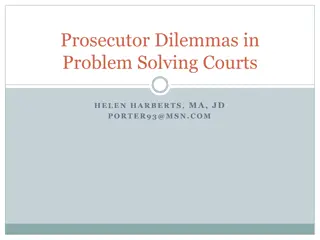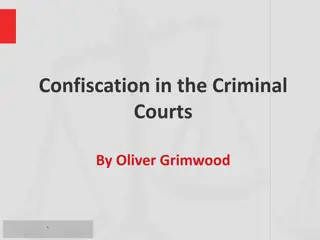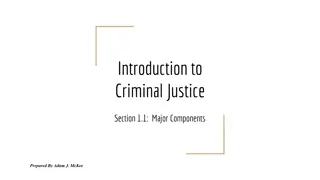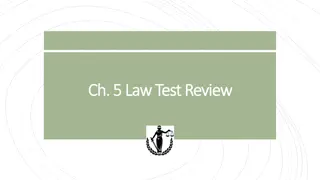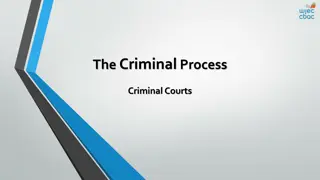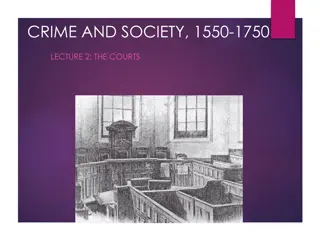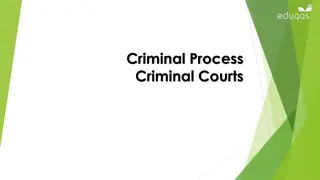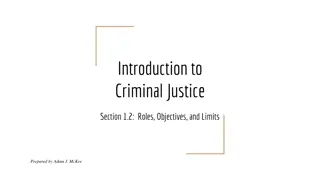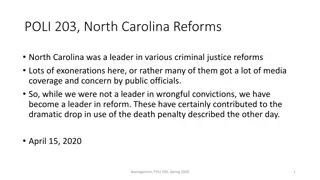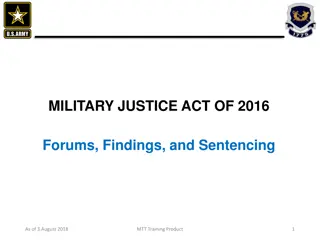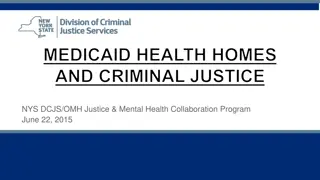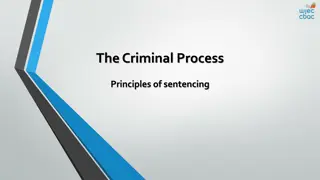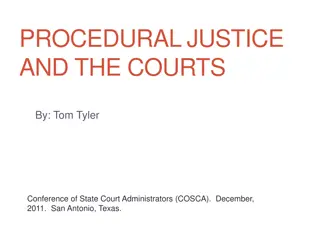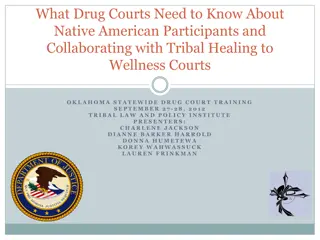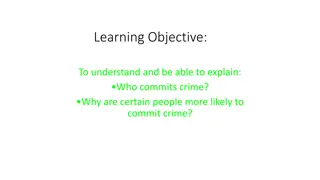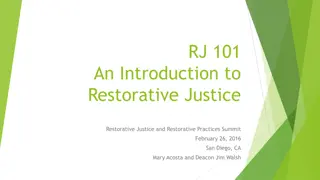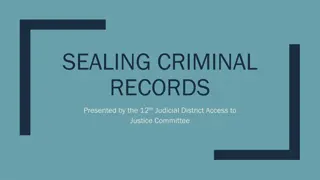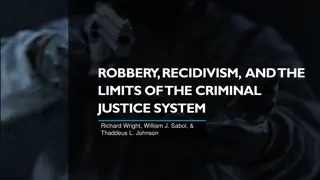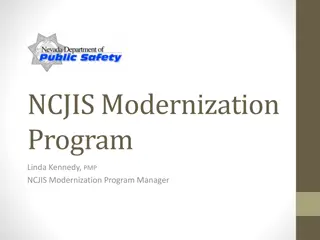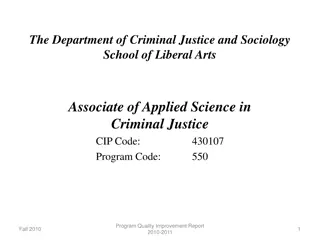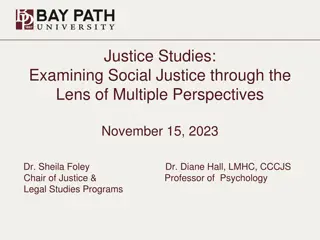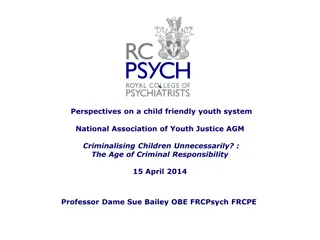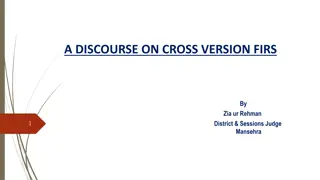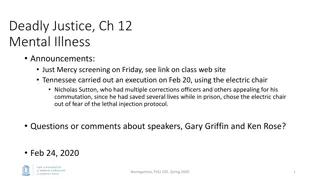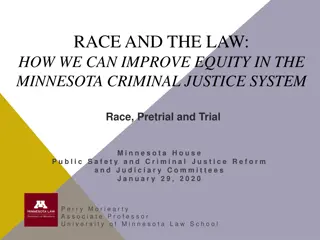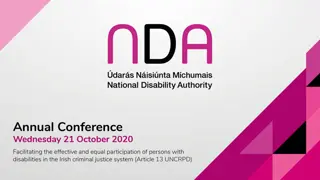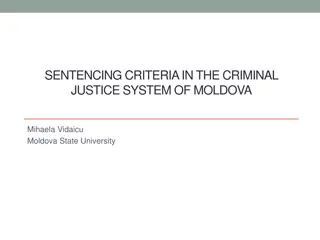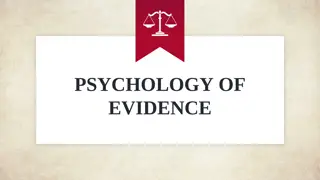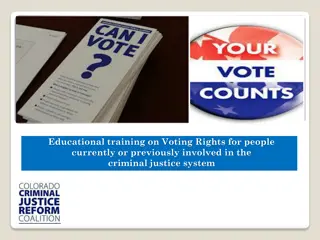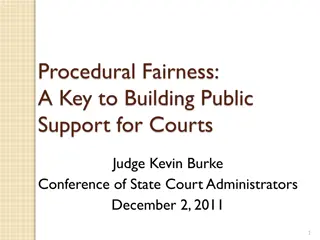Exploring the Criminal Justice System in Cambridge Courts
Delve into the inner workings of the Cambridge Crown Court system through images and informational snippets detailing the common law criminal process, expectations versus realities, and an introductory video. Gain insights into courtroom dynamics, participants' roles, and the stages from investigation to trial. Compare these real-life experiences with media portrayals and contemplate the system's impact on defendants.
Download Presentation

Please find below an Image/Link to download the presentation.
The content on the website is provided AS IS for your information and personal use only. It may not be sold, licensed, or shared on other websites without obtaining consent from the author. Download presentation by click this link. If you encounter any issues during the download, it is possible that the publisher has removed the file from their server.
E N D
Presentation Transcript
Criminal Law and the Courtroom Reach Cambridge 2017 Tim Mason
Expectations for Cambridge Crown Court Visit 1. What will it look like and feel like to be in a court room? 2. Who will be present in the room? 3. What would it be like to be a barrister, judge, defendant? 4. What kinds of things will the barristers be saying?
Cambridge Crown Court introductory video https://www.youtube.com/watch?v=tZYvv_s5R-s&t=47s
Reality v Expectations - discussion How did the reality of the courtroom differ, if at all from your expectations? How is what you saw in Court and in the video different to what you know from other sources such as TV and movies, reading and the news in your country? Why do those differences exist, do they reflect different legal systems or only different media portrayals of the courtroom? Put yourself in the shoes of a defendant, charged with a crime how would you feel about the system and the process of the trial?
Introduction to the common law criminal process
COMMON LAW CRIMINAL PROCESS Step 1: Investigation 1. A potential crime has been committed (eg. Someone dies, is injured, is found with drugs, there is a traffic accident etc.) 2. Police investigate the incident in order to obtain evidence about what occurred. As one of these steps they may interview key persons of whom they are suspicious. 3. Any Accused has certain key rights. a. The right to remain silent, b. The right to be represented by a lawyer. c. Accused is assumed innocent until proven guilty. Furthermore: d. Prosecution has the burden of proving the offence, beyond a reasonable doubt (golden thread).
Step 2: Prosecution Lays a charge and accused enters a plea in court Prosecuting Authorities decide whether or not to prosecute a case 1) There is a discretion with the Director of Public Prosecutions as to whether or not to charge someone with a crime. 2) If a charge is laid a person will go to court (a committal) and plead either guilty or not guilty. a) If plea of guilty then proceed to sentencing. b) If plea of not guilty then proceed to a criminal trial to establish guilt or innocence. Bail: at this point there is a possibility that a person will be granted bail by the Court.
Step 3: Trial In an adversarial trial the Prosecutor and Defence barrister assume opposing positions. Judge is to remain neutral. Judges role to ensure that trial proceeds according to rules. Jury is to decide questions of fact. Judge will make ruling on issues of law. Prosecution adduces evidence in the form of witnesses and exhibits in an attempt to prove the elements of the crime. Witnesses are questioned by both sides in examination-in-chief and cross-examination Compare inquisitorial trial - Much more active participation of the judge. Can call witnesses and ask any questions Defence may also call witnesses.
Step 4: Sentencing The judge looks at a range of factors to consider the appropriate sentence (ie punishment) for the crime. Sometimes punishment is fixed, but often there is a maximum sentence and a judge must consider how serious the particular offence that was committed is within the context of that offence. There may be a separate sentencing hearing at which prosecution and defence introduce evidence and make submissions about the appropriate sentence. Sentence could be appealed as manifestly excessive or manifestly inadequate
Murder - definition Definition (UK): The unlawful killing of a reasonable person in being under the King (or Queen's) peace with malice aforethought express or implied. Proof: Prosecution has the burden to prove each of the physical and mental elements beyond reasonable doubt.
Murder - Physical elements (actus reus) 1. The victim of the killing must have been a person in being , this means a murder will only occur if a person is unlawfully killed and that the victim is a person who is independent from their mother (not still in the womb) 2. The victim must have died, If a person attempts to unlawfully kill a person but they survive the attack that person would most likely be guilty of attempted murder and not actual murder itself. 3. The victim s death must have been caused by the act of the defendant. If a person dies of a disease, then this is not murder.
Mental elements Intention to kill the victim or cause grievous bodily harm. What if there was no intention, but a person was careless?
Defences Killing must have been unlawful . A defence may render killing lawful. Can you think of any such defences? (wartime, self-defence, insanity? necessity?)
Prosecutions burden the golden thread Woolmington v DPP [1935] Facts Reginald Woolmington was a 21-year-old farm labourer from Castleton, Dorset. On November 22, 1934, three months after his marriage to 17-year-old Violet Kathleen Woolmington, his wife left him and went to live with her mother. On December 10 Woolmington stole a double-barrelled shotgun and cartridges from his employer, sawed off the barrel, throwing it into a brook, and then bicycled over to his mother-in-law's house where he shot and killed Violet. He was arrested on January 23 the following year and charged with the wilful murder of his wife. Woolmington claimed he did not intend to kill her. He wanted to win her back so he planned to scare her by threatening to kill himself if she did not come back. While questioning her about returning, he attempted to show her the gun that he was to use to kill himself. By accident, the gun went off shooting Violet in the heart.
The Golden Thread Lower Court At the Bristol Assizes, Swift J ruled that the case was so strong against Woolmington that the burden of proof was on him to show that the shooting was accidental. At trial the jury deliberated for 69 minutes. On February 14, 1935 Woolmington was convicted and sentenced to death. House of Lords (Viscount Sankey) Throughout the web of the English Criminal Law one golden thread is always to be seen that it is the duty of the prosecution to prove the prisoner's guilt subject to... the defence of insanity and subject also to any statutory exception. If, at the end of and on the whole of the case, there is a reasonable doubt, created by the evidence given by either the prosecution or the prisoner... the prosecution has not made out the case and the prisoner is entitled to an acquittal. No matter what the charge or where the trial, the principle that the prosecution must prove the guilt of the prisoner is part of the common law of England and no attempt to whittle it down can be entertained.
Fairness issues How far is the system as a whole? Are there any elements of the system that could lead to unfairness?
